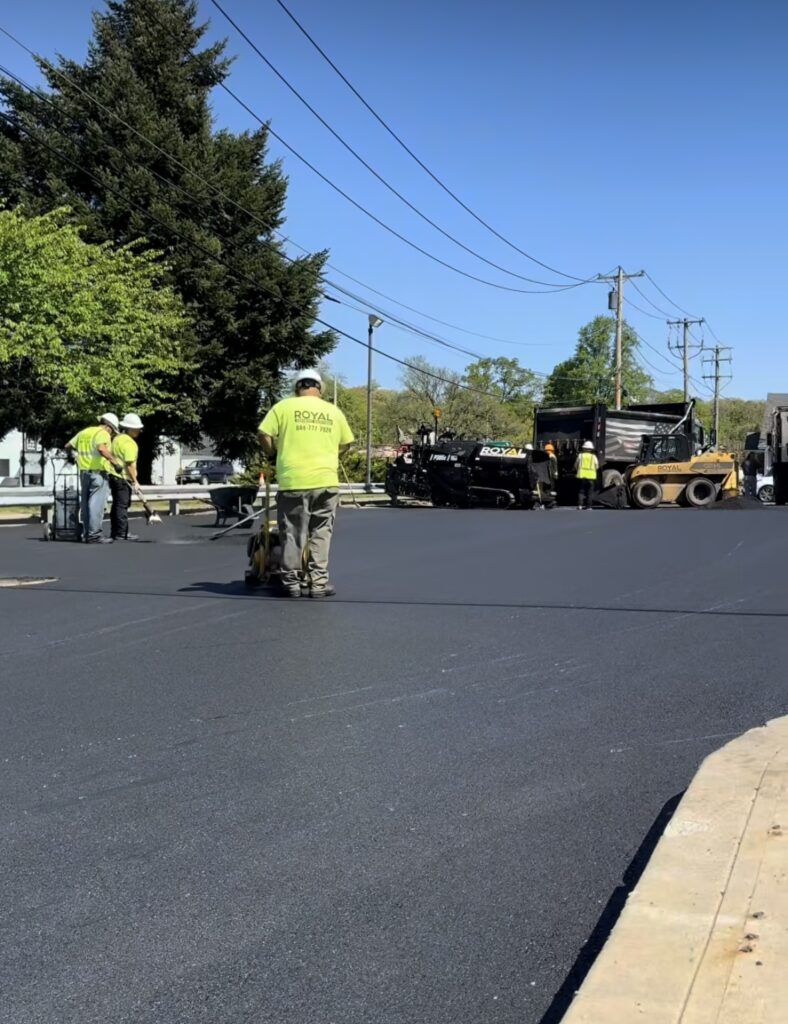
Maintaining asphalt pavement is crucial for the safety and aesthetic appeal of any property. Over time, various issues can arise that compromise the integrity of the pavement. Today, we’ll explore common pavement problems, delve into the underlying causes, and provide effective solutions for asphalt repair. Understanding these issues and knowing how to address them can save you time, money, and hassle in the long run.
Common Pavement Problems
Cracks
- Alligator Cracking: Resembling the skin of an alligator, this type of cracking indicates severe structural failure.
- Linear Cracking: Long, straight cracks usually caused by aging and oxidation of the asphalt.
- Block Cracking: Large, rectangular cracks often due to temperature fluctuations.
Causes
Cracks in asphalt pavement can result from various factors, including:
- Weathering: Exposure to sunlight and fluctuating temperatures.
- Heavy Loads: Excessive weight from vehicles.
- Poor Installation: Substandard workmanship or inadequate base preparation.
Solutions
Effective asphalt repair techniques for cracks include:
- Crack Sealing: Applying a hot or cold sealant to prevent water infiltration.
- Crack Filling: Using asphalt emulsion to fill the cracks and restore the surface.
Potholes
Potholes form when water infiltrates cracks and erodes the underlying base, leading to surface collapse. Factors contributing to pothole formation include:
- Freeze-Thaw Cycles: Expansion and contraction of water within the pavement.
- Traffic Load: Constant vehicle traffic exacerbates the damage.
Solutions
Fixing potholes involves:
- Patching: Removing the damaged area and filling it with new asphalt.
- Cold Patch: Temporary fix using a cold-mix asphalt for immediate repair.
- Hot Patch: A more permanent solution involving hot-mix asphalt.
Rutting
Rutting occurs when the pavement surface depresses under the weight of traffic, forming ruts. Causes include:
- Weak Subgrade: Inadequate support beneath the asphalt layer.
- Poor Compaction: Insufficient compaction during construction.
Solutions
Addressing rutting requires:
- Overlaying: Applying a new layer of asphalt over the existing pavement.
- Milling and Filling: Removing the damaged asphalt and replacing it with new material.
Raveling
Raveling is the loss of aggregate from the pavement surface, leading to a rough texture. It is caused by:
- Aging: Oxidation and hardening of the asphalt binder.
- Poor Quality Mix: Inferior materials used during construction.
Solutions
To repair raveling:
- Sealcoating: Applying a protective layer to seal the surface.
- Resurfacing: Laying a new asphalt layer over the affected area.
Depressions and Bird Baths
Depressions or bird baths are low areas on the pavement that hold water. Causes include:
- Settlement: Subgrade settling over time.
- Poor Drainage: Inadequate drainage leading to water pooling.
Solutions
Fixing depressions involves:
- Leveling: Filling the low areas with asphalt to restore the surface.
- Improving Drainage: Installing proper drainage systems to prevent water accumulation.
Preventive Measures for Asphalt Maintenance
Regular Inspections
Conducting regular inspections helps identify potential problems early. Look for:
- Cracks and Potholes: Address these issues before they worsen.
- Surface Wear: Monitor for signs of raveling or depressions.
Sealcoating
Sealcoating provides a protective layer that shields the asphalt from UV rays, water, and chemicals. It extends the pavement’s lifespan and enhances its appearance.
Proper Drainage
Ensure proper drainage to prevent water from infiltrating the pavement. This includes:
- Cleaning Gutters and Drains: Regularly remove debris from drainage systems.
- Regrading: Adjust the slope of the pavement to facilitate water flow.
Load Management
Limit the weight of vehicles on your pavement to prevent overloading. This can be achieved by:
- Restricting Heavy Vehicles: Designate specific areas for heavy traffic.
- Weight Distribution: Use techniques to evenly distribute loads.
Conclusion
Understanding common pavement problems and knowing how to fix them is essential for maintaining the integrity and appearance of your asphalt surfaces. By addressing issues like cracks, potholes, rutting, raveling, and depressions promptly, you can extend the life of your pavement and avoid costly repairs. Regular inspections, sealcoating, proper drainage, and load management are key preventive measures that can help keep your asphalt in top condition year-round.
For professional asphalt repair and maintenance services, trust Royal Pavement Solutions. Our team of experts is equipped with the skills and experience to handle all your pavement needs, ensuring your surfaces remain durable and visually appealing. Contact us today at 844-777-7924 or here to learn more about how we can assist you with your pavement problems and provide effective solutions.

